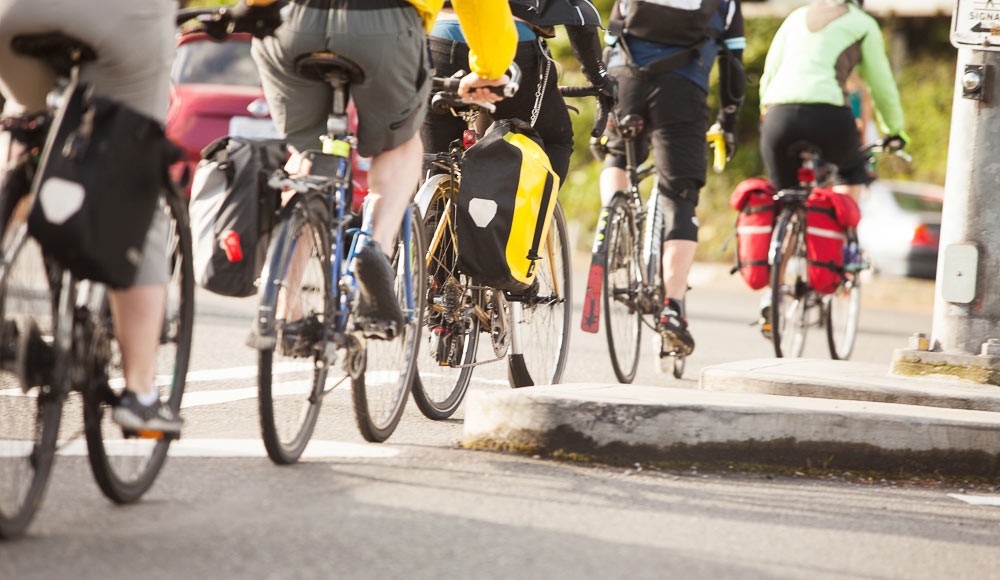Did you ever look at people commuting by bike and wonder why it looks so much easier for some than it does for others? On our daily commute we pass a lot of cyclists ranging in experience and on all types of bikes and there are a few constants we see which the struggling commuters seem to all have in common.
We’ve put together our list of the top five simple fixes you can do to make your commute that much more enjoyable. If you have any more let us know in the comments.
1. Tyres
First things first. Have a look at your tyres and if they aren’t slick (smooth) tyres and have rubber knobbles on them you should probably change them. Slick tyres roll much better and give you more grip because there is more rubber in contact with the ground.
Get yourself a track pump with a pressure gauge. Pumping tyres is hard work and made much easier with one. You can buy online or pick one up when on offer at Lidl or Aldi and prices usually start from as little as £10.
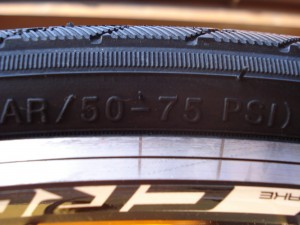 Now that you have your pump have a look at the side of your tyre. On here you will find the maximum pressure your tyre can take. Pump it up to this pressure and check it every few weeks as tyres do go down over time. We wouldn’t recommend going to a petrol station to pump tyres because the gauges can be off and they pump the air in so fast that there is a chance you might blow up the tyre too much.
Now that you have your pump have a look at the side of your tyre. On here you will find the maximum pressure your tyre can take. Pump it up to this pressure and check it every few weeks as tyres do go down over time. We wouldn’t recommend going to a petrol station to pump tyres because the gauges can be off and they pump the air in so fast that there is a chance you might blow up the tyre too much.
The difference having the maximum pressure in your tyres will make to your daily commute is huge. You will fly along like never before. With lower pressure in your tyres there is a much higher rolling resistance due to the amount of rubber in contact with the ground. Pump it up and this resistance is greatly reduced.
2. Chain
Often overlooked and neglected a rusty dry chain will make every commute feel like you’re riding up hill. Chain maintenance is easy, quick and inexpensive to do and it will increase the life span of your drive-train (chain, chainset rings & cassette (cogs)).
For chain cleaning you will need 3 things to do the job right. Degreaser, a chain cleaner and some lube. Use the degreaser and the chain cleaner to get all the crap off that chain. 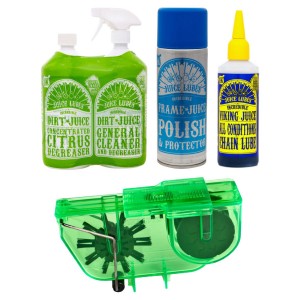 If you only top up the oil on the chain and never clean it the old dirty oil just builds up and up. Using the chain cleaner takes all that grease off and leaves you with a beautiful clean chain. To complete the process simply put some fresh oil on the chain. To do this make sure your bike is in gear (lift the back end and turn the pedals forward) and turn the pedals backwards and apply the oil. To remove excess oil hold an old cloth on the chain on the lowest point and turn the pedals backwards again. Here is a handy kit that includes everything you need to keep that chain in tip top condition.
If you only top up the oil on the chain and never clean it the old dirty oil just builds up and up. Using the chain cleaner takes all that grease off and leaves you with a beautiful clean chain. To complete the process simply put some fresh oil on the chain. To do this make sure your bike is in gear (lift the back end and turn the pedals forward) and turn the pedals backwards and apply the oil. To remove excess oil hold an old cloth on the chain on the lowest point and turn the pedals backwards again. Here is a handy kit that includes everything you need to keep that chain in tip top condition.
3. Saddle height
The amount of people we see every day that either have the saddle too high or too low. Too high and you will end up chaffing all your bits and too low you will do serious damage to the knees. Both will also mean that your not getting the maximum power through the pedals and therefore going places will be slower and take more effort.
Without going for a professional bike fit there is a very simple test that you can do that will get you pretty close to your optimum saddle height. On most new bikes all you need is a set of allen keys to do this job. On some older bikes though you might need a set of spanners.
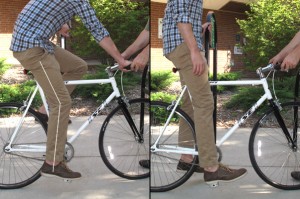 So let’s adjust your saddle height. If you’re on your own put the bike up against a wall and use the end of the handlebar to lean against the wall to keep you upright. Try get the bike as straight as possible. Now sit on the saddle and put your heals on the pedals. Back pedal until one of your legs is at the lowest point possible. With your leg in this position you should be able to lock your leg straight and unlock it again without moving the pedal. If you can’t straighten your leg into the lock position then your saddle is too low. If your saddle is too high then you might not be able to get your foot into the lowest position. Use the allen keys to loosen the bolt and raise or lower the saddle depending on the outcome of the test. You may have to repeat this a few times to get to the sweet spot. If you had to move the saddle a lot it will feel very different for a while and may take some time to get used to the new setting but once you do the daily commute should be much easier for you.
So let’s adjust your saddle height. If you’re on your own put the bike up against a wall and use the end of the handlebar to lean against the wall to keep you upright. Try get the bike as straight as possible. Now sit on the saddle and put your heals on the pedals. Back pedal until one of your legs is at the lowest point possible. With your leg in this position you should be able to lock your leg straight and unlock it again without moving the pedal. If you can’t straighten your leg into the lock position then your saddle is too low. If your saddle is too high then you might not be able to get your foot into the lowest position. Use the allen keys to loosen the bolt and raise or lower the saddle depending on the outcome of the test. You may have to repeat this a few times to get to the sweet spot. If you had to move the saddle a lot it will feel very different for a while and may take some time to get used to the new setting but once you do the daily commute should be much easier for you.
4. Panniers
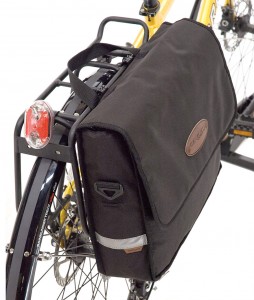 There are two main advantages to using panniers over using a bag on your back. The first reason is you won’t have a sweaty back when you arrive into work. An awful lot of places were people work don’t have showers and it is probably the number 2 reason after personal safety that people use not to commute. With a full bag on your back it is very difficult to avoid sweating even in the midst of winter. The second reason is panniers can carry a bigger load than your back and moving the weight from your back to the bike keeps your body free to do the hard work. Cycling isn’t just about using your legs to turn the pedals the upper body and especially your core all contribute greatly to maximizing the power that goes into those pedals.
There are two main advantages to using panniers over using a bag on your back. The first reason is you won’t have a sweaty back when you arrive into work. An awful lot of places were people work don’t have showers and it is probably the number 2 reason after personal safety that people use not to commute. With a full bag on your back it is very difficult to avoid sweating even in the midst of winter. The second reason is panniers can carry a bigger load than your back and moving the weight from your back to the bike keeps your body free to do the hard work. Cycling isn’t just about using your legs to turn the pedals the upper body and especially your core all contribute greatly to maximizing the power that goes into those pedals.
5. Clothing
You wouldn’t go for a jog in a pair of jeans and an overcoat. Well you might run for the bus or dash to the train but if you were doing anything more substantial you should wear the right cloths. The same goes for cycling. If your commute is very short this isn’t a problem but when you have to go that bit further having the right clothes will make the journey more enjoyable and more importantly more comfortable. Another point to consider is the wear and tear that cycling causes on normal clothes. Before long you will find that all your jeans backside are threadbare and that the right leg on every pair you own is covered in oil (not so much after tip 2 though). Not everyone likes or is comfortable in lycra. Lycra is without doubt the best thing for cycling but there are alternatives for those that won’t take the plunge.
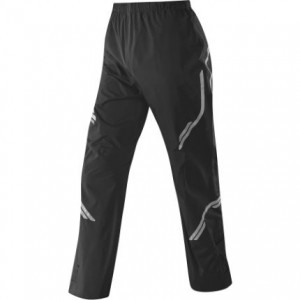 Legs: There is a huge range of casual pants and even cycling specific ‘jeans’ on the market now which will give you nearly as much freedom of movement and comfort as lycra. One thing to avoid are cheap rain trousers. Using these will result in whatever you’re wearing underneath being very wet from perspiration. If you plan to take the plunge with lycra get a good set of bib tights. If they are not bibs they will end up either cutting into your stomach or falling down revealing just how much craic you really are.
Legs: There is a huge range of casual pants and even cycling specific ‘jeans’ on the market now which will give you nearly as much freedom of movement and comfort as lycra. One thing to avoid are cheap rain trousers. Using these will result in whatever you’re wearing underneath being very wet from perspiration. If you plan to take the plunge with lycra get a good set of bib tights. If they are not bibs they will end up either cutting into your stomach or falling down revealing just how much craic you really are.
Body: Depending on your climate your requirements will differ greatly. Looking at a moderate climate a simply layering system and three garments should see you through all four seasons. The most important bit is to have a good base layer. A good base layer will wick any sweat away from the skin and pass it through the material keeping your warm and dry (whatever you do don’t wear cotton as a base layer as it will just get wet with sweat and stay wet). For the cold times a mid layer is a good idea and can be used when it is warmer as your top layer too. A good long sleeve jersey will work great insulating you from the wind and cold. When conditions are really bad you will need a waterproof outer layer. The most important thing to look out for is that this layer be breathable. This will stop you overheating and help reduce the amount of moisture build up inside.



